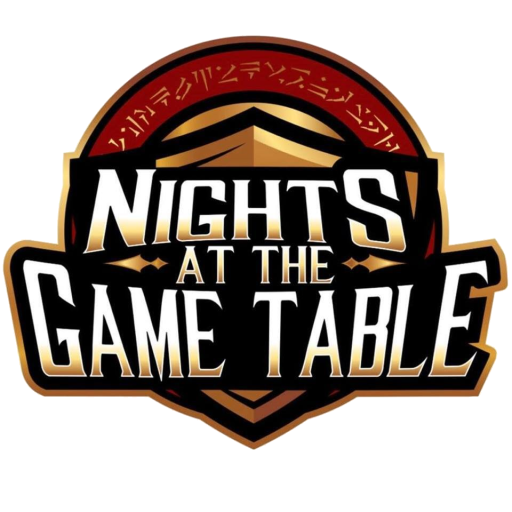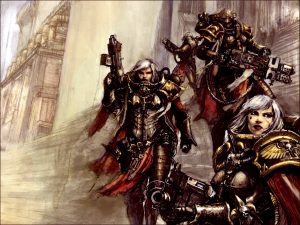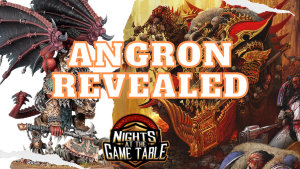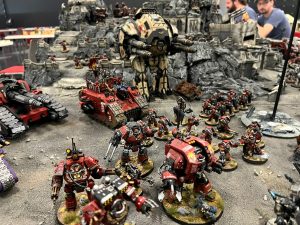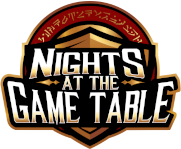It’s a lovely day here in New Jersey, thunderstorms and overcasts about, which makes it a perfect day for your weekly dose of 40k. In today’s 40k life lesson I’m going to cover a topic which I think a lot of people are familiar with, but very few people can actually apply or grasp correctly: Target saturation.
Target saturation is the idea that if you overload your opponent with threats, then your opponent will be unable to answer all of the oncoming issues and be overwhelmed. This tactic definitely has merit, but should not be applied carelessly. There is a very fine proverbial line you want to tread when attempting this tactic, and should you cross it you’re very likely just going to get your army killed. To best understand what I mean you first need to know how to NOT saturate targets properly.

A client who I coach regularly through Nights PRO came to me recently with a question about my NOVA list. He asked me why I deep struck my spears at NOVA in most of my games. A good question, and one I get asked frequently. I responded by saying that by putting them into deep strike I protect them from being alpha struck, should I end up going second. He then replied with a follow-up question asking why not just deploy them, save the CP, and use a threat overload type of strategy to overwhelm my opponent. Another good question.
Now, let’s look at why it wouldn’t work. Shining spears have a very different profile to Grotesques, meaning that some weapons which are useful against spears are not good against grotesques, and vice versa. By giving my opponent the ability to shoot his choice of both types of units, I’m not actually overloading his ability to damage my units at range, I’m actually just optimizing it.

Here’s what I mean. Let’s say I’m playing against an Eldar player with a bunch of Dark Reapers. The two modes of fire for a reaper are either 1 shot S8 AP-2 D3, or 2 shots S5 AP-2 D2. A grotesque is T6, (near a haemonculus) 4 wounds, 4++ invulnerable ad 6+ fnp. Meaning neither profile of the reaper launcher is particularly effective at shooing them. If you fire the 2 shot profile, you need 5’s to wound, and you’re setting yourself up for a potential 3 failed saves necessary to kill 1 grotesque when you factor in the 6+ fnp. If you fire the stronger profile, the damage 3 is really felt against the 4 wounds, as it takes 2 failed saves to kill 1 grotesque reliably, however with only half the total shots that’s an abysmal exchange rate as well. Once you put the shining spears on the table with their T4 W2 4++ invul profile all of a sudden the 2 shot profile of the reaper launcher has a value target to shoot at. By deploying the spears, all you’ve done is give your opponent an optimal target to shoot at.
When Does Target Saturation Work?
Now that you understand a common misconception about what target saturation is, and when NOT to do it, let’s cover how to apply it correctly. It takes an army that can essentially spam a specific type of characteristic profile at you, and that profile should also be one that isn’t vulnerable to a wide variety of weapons.

Running 90 storm boyz and 90 ork boyz is an excellent example of a successful threat overload because aside from anti-infantry firepower, there aren’t any effective weapons to shoot them with. Laugh hysterically as your opponent’s 600 point castellan kills 9 orks per turn. Conversely, a list featuring 3 flyrants and 6 Carnifexes overstresses the opposite end of the spectrum. While that volcano lance might one shot a big bug, it will also take every las gun in the 41st millennium to put a wound on a Carnifex in cover.
Some profiles are just not meant for threat overload. Things like the basic primaris marine or shining spear, are probably the least ideal to attempt this tactic with. Both types of units are on the pricier end of the spectrum, so losing a few spears or a 5 man hell blaster unit to a volcano lance is far from insignificant, yet their profile isn’t durable enough to shrug off hordes of fire warrior bullets and mortars. These units simply do not lend themselves to the threat overload strategy. Side note, this is also why you *typically* don’t see 27 shining spears or a horde of primaris marines and Guilliman running the top tables of GT’s.

Threat saturation/target overload is a concept which you’re going to want to go for in the list design phase for your army, and not all armies can do it well. Still, it’s an incredibly powerful and useful tool for the growing 40k general when building lists, and one you should become intimately familiar with to succeed. If you’d like to learn more about how to successfully implement this strategy check out my personal 40k coaching program so I can help you design a threat overload style list that works for you!
